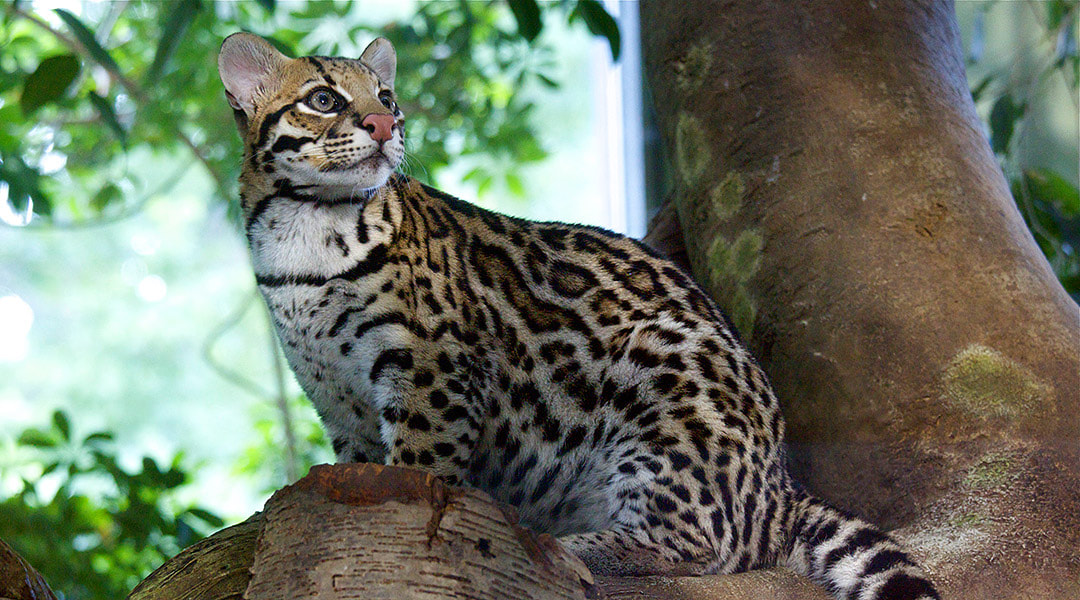Brazilian Ocelot (Leopardus pardalis mitis)DESCRIPTION: A Brazilian Ocelot’s coat tends to be more blotched than spotted, and the chain-like blotches and spots are bordered with black and have a light colored center. These markings run the entire length of the cat. The eyes are rimmed in black and they have two distinct stripes on their face running over the forehead to their back. The base color varies between whitish or tawny yellow to reddish gray. The belly is white, and the backs of the ears are black with a central white spot. They have a pink nose.
Every Brazilian Ocelot’s color pattern is unique, much like the human fingerprint. Brazilian Ocelots grow to a length of 41 to 45 inches and stand 16 to 20 inches tall, Males weigh 15 to 35 lbs. Females are slightly smaller than males so they weigh slightly less. Brazilian Ocelots are nocturnal and their night vision is six times better than a human’s. Brazilian Ocelots also have sharp teeth for tearing apart prey, but they do not have teeth for chewing, so they swallow pieces of food without chewing. Brazilian Ocelots have a tongue that successfully separates even small pieces of meat from bones. Brazilian Ocelots have retractable claws. They are about twice the size of a regular domestic house cat. Unlike most house cats, they love water and they are excellent swimmers. RANGE: Brazilian ocelots are found in southern Brazil, Paraguay and northern Argentina. HABITAT: They occupy a wide spectrum of habitats, including mangrove forests, coastal marshes, savannah grasslands, pastures, thorn scrub and tropical forests of all types. DIET: Carnivore – small rodents, reptiles, birds, medium-sized mammals, crustaceans, and fish. FAMILY LIFE: After mating, females find a hollow tree, dense thorn bush, or crack in the rock in preparation for birth. Pregnancy lasts up to 85 days and ends with 2 to 3 kittens. Kittens weigh approximately 8.5 ounces at birth. When the kittens are a few months old, they begin to learn how to hunt from their mothers. They become independent at approximately 1 year of age, but seem to be tolerated in their natal range for up to 2 years. Brazilian Ocelots are solitary and territorial. Females defend their exclusive territory, which can be as much as 9 square miles. Males have a much larger territory ranging upwards of 35 square miles that overlap that of one or more females. Ocelots communicate by use of scent markings and by vocal communications. LIFE SPAN: Brazilian ocelots live 7 to 10 years in the wild and up to 20 years in human care. STATUS: Species at Risk (U.S. Endangered Species List—Endangered) |
In Connecticut’s Beardsley Zoo’s Rainforest Building you will find Pip. She is a beautiful Brazilian Ocelot. Brazilian Ocelots are sometimes referred to as “painted leopards” or “dwarf leopards”.
The Aztecs, along with many other indigenous cultures of the region, honored this wild cat and revered it for its hunting prowess and beauty. The word "ocelot" comes from the Aztec word "tlalocelot," which means field tiger. In ancient Peru, the Moche people worshiped animals and often painted ocelots in their art. |
Rainforest Building open daily from 10:30 am to 3:30 pm









